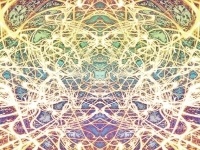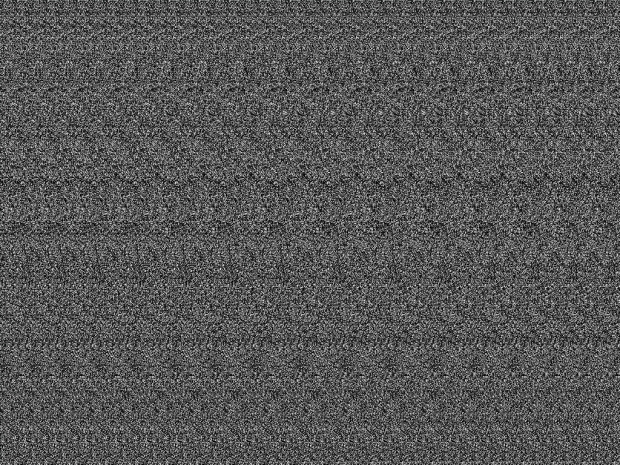-
RMR
26th Feb 2013
It's hard to introduce autostereograms to someone who hasn't viewed them: The explanation makes sense only after you've experienced one. Basically, autostereograms are 2D images that give your eyes 3D data. When you focus your eyes on an autostereogram, the image area on the monitor seems to become a box containing vividly three-dimensional objects — and the rest of the monitor merges with the room. When you lose focus, you see random dots or random patterns. So what are we talking about here — some form of optical illusion? Here's a brief walkthrough.
When you first look at an autostereogram, it looks like a repeated pattern that isn't special in any way. Or, it could even be just random dots. After you focus your eyes, a hidden world becomes visible. But technically speaking, autostereograms aren't optical illusions. With an optical illusion, you see simple 2D data; the illusory effect is because you "understand" the image in different ways. With autostereograms, your eyes get data similar to that in a "real" 3D scene. This page has a decent explanation of how they work.
So how do you focus and "get" the hidden image? Some people just can't seem to, and others get it in a matter of minutes. This writer's guide to focus goes as follows:
1. Look at the image without bothering about what it is.
2. Focus your eyes into infinity. That is, imagine there's an object many metres behind the monitor, and try to focus on it.
3. While doing this, remain aware of the image on the monitor. If the image on the monitor seems to change, just be aware of the change — but don't focus on it.
4. The 3D object will reveal itself at some point — maybe immediately, maybe after a few tries. The first time, your eyes will pop out of your skull. It can seem as though a window has suddenly been carved out of the monitor.(There’s a different way of doing it, which is exactly the opposite: Un-focus. Relax, and let your eyes not focus on anything in particular. This is easier when you're feeling sleepy.)
Here's a large collection of autostereograms to start off with. As you explore, you'll find that there are variations in image type, different ways to focus, and so on. But just one will be enough to get you hooked!
From Keith's autostereogram page. Stare for a while, and let your eyes worm their way through!
If you'd like to create your own autostereograms, here's a page that lists some tools. Of those, I’ll recommend Bigle 3D for simplicity. You'll need two things — (a) a pattern image that you can download and use, and (b) the depth image, which is what will appear as 3D in your autostereogram. The depth image should have the areas close to the viewer (or camera) as lighter, and far-away areas as darker. You can manipulate some regular photos with Photoshop — or even with simpler software — to achieve this.
Mr Shannon says on his page (above), "The most amazing aspect ... is that such images have never existed in the course of human evolution — they could only be created after computer graphics got to a pretty high level of development. And yet the human visual system is powerful enough to deal with such unprecedented stimuli". I don’t quite agree: The stimulus isn’t unprecedented — it's close to that of a regular 3D image. It's all about how you focus (or let go of focus). Which is similar to much of life, I might add.
Drill Through Your Monitor Into Little Worlds Beyond! | TechTree.com
Drill Through Your Monitor Into Little Worlds Beyond!
Autostereograms are eye-poppingly profound optical non-illusions.
News Corner
- DRIFE Begins Operations in Namma Bengaluru
- Sevenaire launches ‘NEPTUNE’ – 24W Portable Speaker with RGB LED Lights
- Inbase launches ‘Urban Q1 Pro’ TWS Earbuds with Smart Touch control in India
- Airtel announces Rs 6000 cashback on purchase of smartphones from leading brands
- 78% of Indians are saving to spend during the festive season and 72% will splurge on gadgets & electronics
- 5 Tips For Buying A TV This Festive Season
- Facebook launches its largest creator education program in India
- 5 educational tech toys for young and aspiring engineers
- Mid-range smartphones emerge as customer favourites this festive season, reveals Amazon survey
- COLORFUL Launches Onebot M24A1 AIO PC for Professionals








Reader Comments (10)